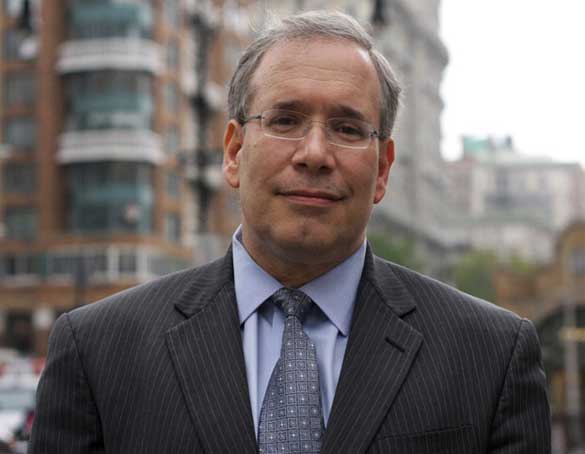Op-Ed: Building A Better Transit Future In Brooklyn

The following op-ed was written by mayoral candidate and Manhattan Borough President Scott Stringer.
The future looked rosy 100 years ago, when New York undertook a revolutionary plan to build a vast network of subways and elevated trains. But it looks considerably different today, as we struggle to meet urgent transit needs.
Transit deserts dot the Brooklyn landscape, from Mill Basin and Marine Park – where an “express” bus takes over an hour to reach Midtown – to East Flatbush and Greenpoint, a burgeoning neighborhood that relies on the G train as its sole subway link. While our 100-year-old system is designed for connectivity between Brooklyn and the Manhattan core and back, it does little to connect Brooklynites to other Brookynites. Want to get from Williamsburg to Bay Ridge? Better head into Manhattan and back out again. We can and must do better. Our system must reflect where people live and work today, not 100 years ago.
One million more people will be living in our City by 2025 and to put it bluntly: We are not ready. The Metropolitan Transportation Authority – the central nervous system of our regional transportation network – is a fiscal house of cards.
This crucially important agency is being held together with a combination of unprecedented borrowing, and fare hikes as far as the eye can see. That’s no way to run a railroad, much less the nation’s largest transit system.
What’s needed is a new, more stable stream of revenue for the MTA, one that stabilizes its operating budget but also allows us to expand the system to reflect where people live and work today, not 100 years ago.
Here’s my plan: an infrastructure bank for mass transit that I call the “New York City Transit Trust.”
Mayors across the country are recognizing that cities cannot rely solely on state and federal funding for infrastructure. In Chicago, Rahm Emanuel has launched the Chicago Infrastructure Trust to leverage private capital for needed projects.
The New York City Transit Trust will also leverage private dollars by tying our infrastructure bank to a dedicated revenue stream – the Mortgage Recording Tax – that currently helps fund the MTA’s operating costs.
The Transit Trust could provide capital for a range of projects, many of which can improve the lives of thousands of Brooklyn residents. BRT will finally come to Brooklyn next year on Nostrand Avenue, promising to improve service for 300,000 people who live within a quarter mile of the route. The Trust could enable further expansions of BRT to Flatbush and Utica Avenues, the rebirth of light rail in the burgeoning neighborhoods of Red Hook and Carroll Gardens, the continued extension of the G train to Church Avenue, and the full rollout of countdown clocks along the borough’s lettered lines. In addition, the “X” line – a subway that can be built along existing rights of way between Brooklyn, Queens, and the Bronx—could improve interborough connections that would help over 70,000 Brooklynites who commute to Queens on a daily basis. Lastly, the Trust could benefit riders all over the City by paying for new subway cars and buses and improving safety and reliability by replacing track and upgrading outdated signals.
Of course, if we are going to redirect the Mortgage Recording Tax to the MTA’s capital needs, we have to replace it on the operations side with a new, reliable funding stream.
I believe we should start by getting back what we lost when the commuter tax was repealed in 1999.
The commuter tax, which affects people who work in NYC but live outside the five boroughs, produced billions of dollars in revenue for New York City between 1966 and 1999. If we reinstated it at the same rate as when it was killed 14 years ago, we would raise $725 million a year to support the region’s transportation network.
It’s the right thing to do. Every day, close to a million commuters pour into New York City, using our roads, bridges and rails to get here and relying on our police, fire and sanitation services when they arrive.
All we need is leadership – leadership that recognizes that real investment in transit projects always pays huge dividends down the road, and that there are new, more creative ways to fund those projects.
That’s how you create a true, five-borough transportation network and prepare New York for the next century of growth.




